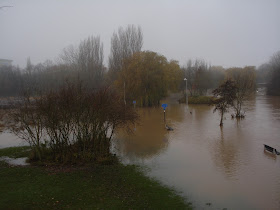Alex
Selky, going on seven, so eager to grow up, kissed his mother goodbye
on their front steps on the hot bright morning of May 15 1980, and
marched himself down the street, on his way to the New Boston School
of Back Bay, two blocks from his corner. He never arrived at school,
and from the moment he turned he corner, he apparently disappeared
from the face of the earth.
That,
in a nutshell, is the basic story of Still Missing, by Beth
Gutcheon (published by
Persephone), but there's much more to it than that. It
explores the effect of Alex's disapearance on his mother Susan, and
its impact on her relationships with her ex-husband Graham and his
new wife, and on her friends and neighbours – and the way they
react. Then there's the effect the case has on Al Menetti, the
detective in charge of the case, and his family, as he becomes
obsessed with finding the missing boy.
Perhaps
the worst thing that happened to Susan in the weeks that followed
Alex's disappearnce was that she gradually came to see the world as
the police saw it.
As
the investigation proceeds old secrets and betrayals are revealed:
Susan's best friend once slept with Graham; another friend is a
junkie, and a neighbour has been accused of child molestation but
never convicted. Her world, hitherto so safe and secure, is torn
apart as she learns what paedophiles do to young boys, and her trust
in people is broken. At one stage she tells relatives, in confidence,
that a new development is expected – but the news is leaked to a
paper which jeopardises the inquiry by splashing an untrue story
claiming the case is solved.
Events
take a bizarre turn when Susan's male cleaner is found to be living
under an assumed identity after serving time in jail for raping a
young boy, and he is charged with the abduction and murder of her
son. Susan is convinced of his innocence, but the Gay Rights movement
are wary of supporting his cause in the climate of homophobic
hysteria which follows the arrest.
Susan
spends her days in a kind of fog, unable to cope with the everyday
demands of life, haunted by fear that that when people leave her she
wil never seem them again. But she steels herself to cope with
reporters, tv preseners, psychics, hoaxers who provide false hope
through misinformation, letters from well-wishers, and letters from
people who launch personal attacks on her – one even writes that
she is glad for what happened because she thinks Susan is a bad
mother.
And
there are phone calls from parents of other missing children,
offering a network of support, but unable to engage with people as
they remain locked in their own private grief and horror, retelling
their stories over and over again.
The
suspicion and fear which arise when Alex vanishes are utterly
believable, and the way the community rallies round to help search
for him is heart-warming but, sadly, people soon forget and carry on
with their lives. No-one quite knows what to say to Susan, or how to
treat her – it's not like a death, where there is a body, and
people can grieve and move on.
The
only person during all those weeks who seemed to preserve a sense of
Susan as a normal person was Margaret. She had a knack of being
supportive witout passing judgement, sympahetic without being
sentimental. She made it clear that laughing once in a while didn't
mean giving up one's faith, and if Susan needed to cry, she knew the
difference between comforting her and demanding that she stop.
It
turns out that Maragret, a neighbour, has been through this herself,
for years earlier one of her daughters disappeared and was never
found.
Susan
never loses her belief that her son is still alive, and throughout
the novel we get glimpses of him as she remembers the way he looks,
the way he moves, the way he speaks, the things he likes to do, his
favourite food...
.
We've
all read newspaper stories about missing children and watched
emotional appeals from tearful parents on television, but this novel
brings it all to life. I couldn't honestly say I liked it, though I'm
not sure why – it's not really my type of book, and I do tend to
shy away from contemporary novels, especially if they are too
realistic (actually, I'm not sure I can describe a novel published in
1981 as contemporary, but I'm sticking with that terminology).
However,
it is beautifully written, in lovely, spare, unsentimental prose, and
portrays a shocking event and the difficult (and often controversial)
issues that arise with great sensitivity. The characters are
sympathetically drawn, and the story unfolds so gradually, with a
drip-feed of information, that I actually got a sense of how slowly
things move along in a case like this, which was rather refreshing,
because often stories involving police investigation hurtle along at
an impossibly breakneck speed, with all the action condensed into a
few days. But this isn't a conventional crime novel. In fact, I don't
know that you could call it a crime novel at all – it's about the
effects of a crime rather than the crime itself. It's about loss, and about a mother,
and how she feels, and how she copes when the unimaginable becomes a
reality and her child disappears.




































